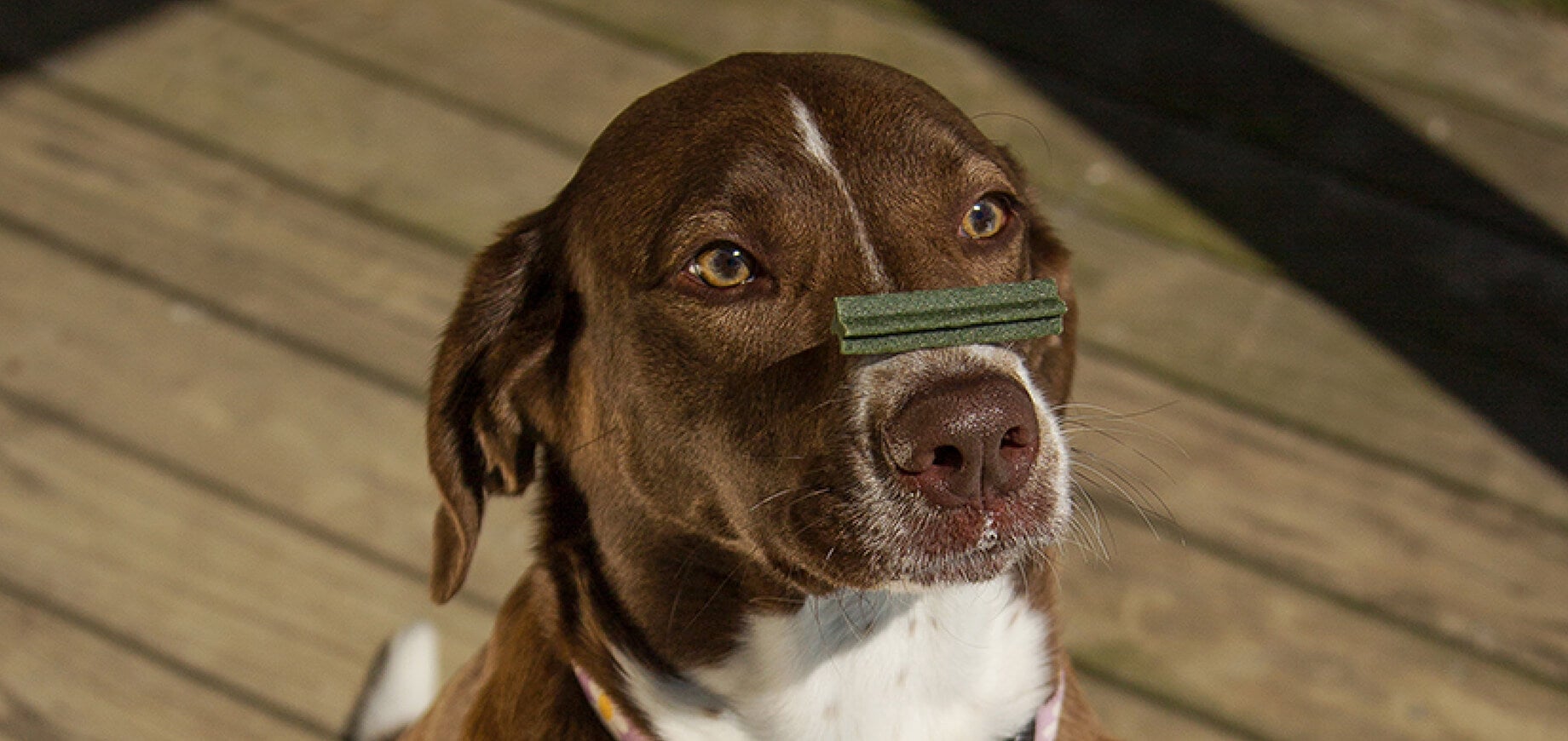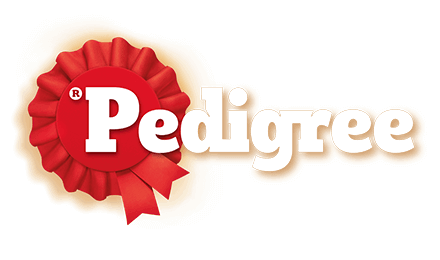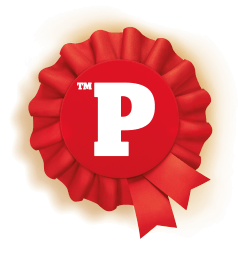Find products that match your dog’s needs

As humans, we brush our teeth daily to maintain oral hygiene. As a pet parent, have you ever wondered whether you need to start brushing your dog’s teeth as well? The answer is yes! Brushing dogs’ teeth is a good practice that helps keep your pet’s mouth clean by clearing off the plaque and other paraphernalia such as bits of food and dirt. This further helps keep bad breath at bay as well. In the long run, brushing dogs’ teeth also helps prevent other dental problems for your dog such as gum ailments. Brushing your dog’s teeth regularly is a great way to keep their gums and teeth healthier and fight gum disease. Introducing tooth brushing gradually will mean your fur baby will learn to enjoy the experience.
The answer to this question really depends on how comfortable your dog is with the activity and your ability to put in the time and effort required. Unlike humans, dogs do not require daily brushing. You can brush your dog’s teeth thrice a week to keep their mouth clean and teeth healthy. Once a dog is used to the practice, brushing teeth may even turn out to be an excellent bonding exercise between pet parent and dog.
Small dogs require child’s size brush
Toy or miniature dogs require small special pet toothbrush
Before you clean your fur baby’s pearly whites, remember to:
Here’s a quick look at how to brush dog teeth properly.
The regular toothbrush and toothpaste that we use for ourselves are not suitable for dogs. There are dental hygiene products that have been specially designed for the purpose of brushing dogs’ teeth. These include carefully formulated toothpastes with flavors that your dog will enjoy. It must be noted that using human toothpaste can cause problems for your dog.
Another key factor to keep in mind when you are brushing dogs’ teeth for the first time is to find a position that makes your dog comfortable and relaxed. Brushing teeth must be a fun and rewarding experience for the dog and the dog parent. Therefore, try sitting beside them or in front of them as opposed to brushing their teeth from behind by standing over them or trying to pin them down on the floor.
Smear a small amount of toothpaste on your fingertip. Allow your dog to lick the toothpaste. Your pet should like the taste and be keen to eat it.
Place some toothpaste on your fingertip. With your other hand gently hold the muzzle to keep the mouth mostly closed. Insert your finger under the top lip on the side of the face. Rub your fingertip on the teeth. Don’t allow the mouth to open or you may get your finger chewed. Slide your finger further back inside the cheeks (do not do this if there is any risk that you could be bitten). If your dog won’t sit still when you hold the muzzle, you should seek some behavioural advice.
Wet the toothbrush with water and add some toothpaste then push it down into the bristles. Hold the muzzle to keep the mouth gently closed. This is to stop chewing when the brush is introduced. Lift the top lip on one side of the mouth (with a fingertip or thumb of the hand holding the muzzle). Gently brush the canine teeth – these are the longest teeth. Change your hold on the muzzle to lift the lip on the other side, then brush the canine teeth on this side. Tip: Do not start with the incisor teeth at the front of the mouth as this is a more sensitive area of the mouth.
After brushing the canine teeth, continue to brush the teeth further back in the mouth. To get to the molar teeth you will need to slip the brush past the corner of the lips inside the cheeks. Try a smaller brush if you struggle to get inside the cheek. Brush the upper teeth first and then allow the mouth to open slightly to be able to brush just along the gum line of the lower teeth. Increase the brushing gradually and stop if your dog is reacting more than a little bit.
Brush the canine and back teeth on both sides (as before). Now lift the top lip at the front of the mouth (still holding the mouth closed) and brush the incisors. You are now brushing the outside of all the teeth. You may want to brush for a little longer to do a more thorough cleaning. For the best results brushing should be at least once a day.
This is how to clean your dog’s teeth without causing your pet too much discomfort.
Brushing your dog’s teeth regularly not only helps eliminate dog’s bad breath but also keeps their oral cavity clean. Brushing also prevents many dental problems such as accumulation of plaque as well as tartar, gum disease, bleeding or any damage due to toys or other activities, gingivitis and more.
If you are wondering how to clean dogs’ teeth without brushing, you should know that you cannot skip this dental hygiene routine. However, it is obvious that you cannot brush their teeth every day. So, what else can you do to keep your dog’s teeth clean at all times? In addition to brushing your dog’s teeth regularly, you can trust PEDIGREE® DentaStix® to keep your beloved pet’s teeth and gums healthy and strong. Scientifically proven to reduce the build-up of tartar significantly, PEDIGREE® DentaStix® is an easy-to-use oral dog chew in the form of a treat. An effective combination of regular brushing and using PEDIGREE® DentaStix® can greatly benefit your dog’s dental health and minimize the risk of any dental problems in the future.
PEDIGREE® DentaStix® contains active ingredients such as Zinc, Sodium Tripolyphosphate and Sulphate. This effective product is specially designed to support the gum health of your dog.
The unique X-shaped design of PEDIGREE® DentaStix® and abrasive texture helps clean off tartar build-up well even in hard-to-reach places.
Daily feeding of PEDIGREE® DentaStix® is scientifically proven to reduce tartar build-up by up to 80%.
You can bring home the right dental hygiene partner for your dog based on their bodyweight. PEDIGREE® DentaStix® is available in three sizes for small, medium and large breed dogs designed specifically according to their needs.
There are certain situations that may require seeking the help of a professional veterinarian for brushing dogs’ teeth. Here are some circumstances when it is advisable to reach out to a professional for your dog’s dental hygiene needs:
Yes. There are several short-term and long-term benefits of brushing your dog’s teeth regularly. How often you brush your dog’s teeth is a matter of preference, but it is highly recommended to follow a regular dental hygiene plan for your dog.
Yes. PEDIGREE® DentaStix® has a unique shape and texture that helps clean even the hard-to-reach spots in your dog’s mouth. It helps reduce the build-up of tartar by up to 80% and contains active ingredients that support your dog’s gum health. A combination of regular brushing and using PEDIGREE® DentaStix® can do wonders to maintain your dog’s dental hygiene levels.
You may use a human toothbrush with soft bristles to clean their teeth. However, using a toothbrush that has been specifically designed for dogs is highly recommended.
Ignoring your dog’s dental health can put them at risk of developing tooth decay, gum disease and other infections over a period of time. Plaque and tartar build-up can not only cause bad breath, but also heightens the risk of other dental problems that can cause discomfort and pain to your dog. Infections that originate in the mouth can potentially spread to your dog’s body and result in fatal conditions that could be detrimental to your dog’s health.

Find a PEDIGREE® stockist
near you!
Buy online
Click to buy from any of the retailers below

